RBS 2011 Annual Report Download - page 348
Download and view the complete annual report
Please find page 348 of the 2011 RBS annual report below. You can navigate through the pages in the report by either clicking on the pages listed below, or by using the keyword search tool below to find specific information within the annual report.-
 1
1 -
 2
2 -
 3
3 -
 4
4 -
 5
5 -
 6
6 -
 7
7 -
 8
8 -
 9
9 -
 10
10 -
 11
11 -
 12
12 -
 13
13 -
 14
14 -
 15
15 -
 16
16 -
 17
17 -
 18
18 -
 19
19 -
 20
20 -
 21
21 -
 22
22 -
 23
23 -
 24
24 -
 25
25 -
 26
26 -
 27
27 -
 28
28 -
 29
29 -
 30
30 -
 31
31 -
 32
32 -
 33
33 -
 34
34 -
 35
35 -
 36
36 -
 37
37 -
 38
38 -
 39
39 -
 40
40 -
 41
41 -
 42
42 -
 43
43 -
 44
44 -
 45
45 -
 46
46 -
 47
47 -
 48
48 -
 49
49 -
 50
50 -
 51
51 -
 52
52 -
 53
53 -
 54
54 -
 55
55 -
 56
56 -
 57
57 -
 58
58 -
 59
59 -
 60
60 -
 61
61 -
 62
62 -
 63
63 -
 64
64 -
 65
65 -
 66
66 -
 67
67 -
 68
68 -
 69
69 -
 70
70 -
 71
71 -
 72
72 -
 73
73 -
 74
74 -
 75
75 -
 76
76 -
 77
77 -
 78
78 -
 79
79 -
 80
80 -
 81
81 -
 82
82 -
 83
83 -
 84
84 -
 85
85 -
 86
86 -
 87
87 -
 88
88 -
 89
89 -
 90
90 -
 91
91 -
 92
92 -
 93
93 -
 94
94 -
 95
95 -
 96
96 -
 97
97 -
 98
98 -
 99
99 -
 100
100 -
 101
101 -
 102
102 -
 103
103 -
 104
104 -
 105
105 -
 106
106 -
 107
107 -
 108
108 -
 109
109 -
 110
110 -
 111
111 -
 112
112 -
 113
113 -
 114
114 -
 115
115 -
 116
116 -
 117
117 -
 118
118 -
 119
119 -
 120
120 -
 121
121 -
 122
122 -
 123
123 -
 124
124 -
 125
125 -
 126
126 -
 127
127 -
 128
128 -
 129
129 -
 130
130 -
 131
131 -
 132
132 -
 133
133 -
 134
134 -
 135
135 -
 136
136 -
 137
137 -
 138
138 -
 139
139 -
 140
140 -
 141
141 -
 142
142 -
 143
143 -
 144
144 -
 145
145 -
 146
146 -
 147
147 -
 148
148 -
 149
149 -
 150
150 -
 151
151 -
 152
152 -
 153
153 -
 154
154 -
 155
155 -
 156
156 -
 157
157 -
 158
158 -
 159
159 -
 160
160 -
 161
161 -
 162
162 -
 163
163 -
 164
164 -
 165
165 -
 166
166 -
 167
167 -
 168
168 -
 169
169 -
 170
170 -
 171
171 -
 172
172 -
 173
173 -
 174
174 -
 175
175 -
 176
176 -
 177
177 -
 178
178 -
 179
179 -
 180
180 -
 181
181 -
 182
182 -
 183
183 -
 184
184 -
 185
185 -
 186
186 -
 187
187 -
 188
188 -
 189
189 -
 190
190 -
 191
191 -
 192
192 -
 193
193 -
 194
194 -
 195
195 -
 196
196 -
 197
197 -
 198
198 -
 199
199 -
 200
200 -
 201
201 -
 202
202 -
 203
203 -
 204
204 -
 205
205 -
 206
206 -
 207
207 -
 208
208 -
 209
209 -
 210
210 -
 211
211 -
 212
212 -
 213
213 -
 214
214 -
 215
215 -
 216
216 -
 217
217 -
 218
218 -
 219
219 -
 220
220 -
 221
221 -
 222
222 -
 223
223 -
 224
224 -
 225
225 -
 226
226 -
 227
227 -
 228
228 -
 229
229 -
 230
230 -
 231
231 -
 232
232 -
 233
233 -
 234
234 -
 235
235 -
 236
236 -
 237
237 -
 238
238 -
 239
239 -
 240
240 -
 241
241 -
 242
242 -
 243
243 -
 244
244 -
 245
245 -
 246
246 -
 247
247 -
 248
248 -
 249
249 -
 250
250 -
 251
251 -
 252
252 -
 253
253 -
 254
254 -
 255
255 -
 256
256 -
 257
257 -
 258
258 -
 259
259 -
 260
260 -
 261
261 -
 262
262 -
 263
263 -
 264
264 -
 265
265 -
 266
266 -
 267
267 -
 268
268 -
 269
269 -
 270
270 -
 271
271 -
 272
272 -
 273
273 -
 274
274 -
 275
275 -
 276
276 -
 277
277 -
 278
278 -
 279
279 -
 280
280 -
 281
281 -
 282
282 -
 283
283 -
 284
284 -
 285
285 -
 286
286 -
 287
287 -
 288
288 -
 289
289 -
 290
290 -
 291
291 -
 292
292 -
 293
293 -
 294
294 -
 295
295 -
 296
296 -
 297
297 -
 298
298 -
 299
299 -
 300
300 -
 301
301 -
 302
302 -
 303
303 -
 304
304 -
 305
305 -
 306
306 -
 307
307 -
 308
308 -
 309
309 -
 310
310 -
 311
311 -
 312
312 -
 313
313 -
 314
314 -
 315
315 -
 316
316 -
 317
317 -
 318
318 -
 319
319 -
 320
320 -
 321
321 -
 322
322 -
 323
323 -
 324
324 -
 325
325 -
 326
326 -
 327
327 -
 328
328 -
 329
329 -
 330
330 -
 331
331 -
 332
332 -
 333
333 -
 334
334 -
 335
335 -
 336
336 -
 337
337 -
 338
338 -
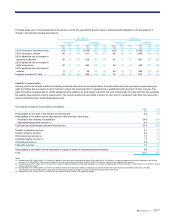 339
339 -
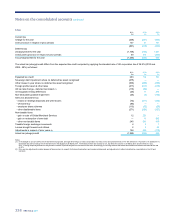 340
340 -
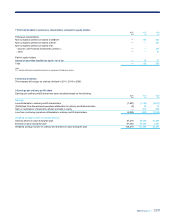 341
341 -
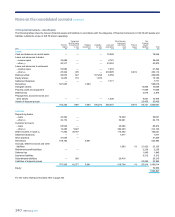 342
342 -
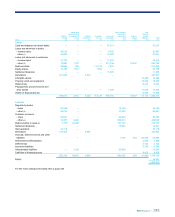 343
343 -
 344
344 -
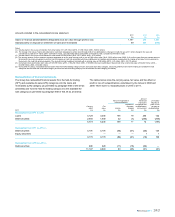 345
345 -
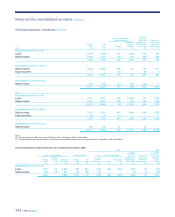 346
346 -
 347
347 -
 348
348 -
 349
349 -
 350
350 -
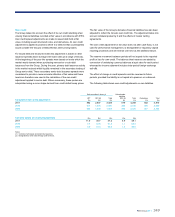 351
351 -
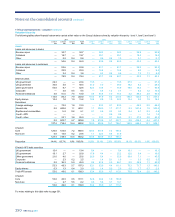 352
352 -
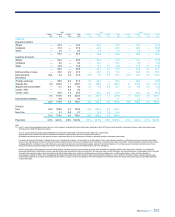 353
353 -
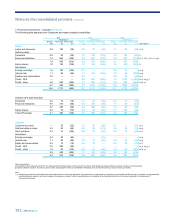 354
354 -
 355
355 -
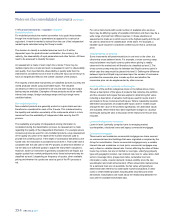 356
356 -
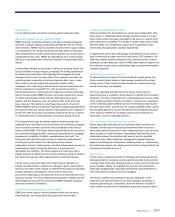 357
357 -
 358
358 -
 359
359 -
 360
360 -
 361
361 -
 362
362 -
 363
363 -
 364
364 -
 365
365 -
 366
366 -
 367
367 -
 368
368 -
 369
369 -
 370
370 -
 371
371 -
 372
372 -
 373
373 -
 374
374 -
 375
375 -
 376
376 -
 377
377 -
 378
378 -
 379
379 -
 380
380 -
 381
381 -
 382
382 -
 383
383 -
 384
384 -
 385
385 -
 386
386 -
 387
387 -
 388
388 -
 389
389 -
 390
390 -
 391
391 -
 392
392 -
 393
393 -
 394
394 -
 395
395 -
 396
396 -
 397
397 -
 398
398 -
 399
399 -
 400
400 -
 401
401 -
 402
402 -
 403
403 -
 404
404 -
 405
405 -
 406
406 -
 407
407 -
 408
408 -
 409
409 -
 410
410 -
 411
411 -
 412
412 -
 413
413 -
 414
414 -
 415
415 -
 416
416 -
 417
417 -
 418
418 -
 419
419 -
 420
420 -
 421
421 -
 422
422 -
 423
423 -
 424
424 -
 425
425 -
 426
426 -
 427
427 -
 428
428 -
 429
429 -
 430
430 -
 431
431 -
 432
432 -
 433
433 -
 434
434 -
 435
435 -
 436
436 -
 437
437 -
 438
438 -
 439
439 -
 440
440 -
 441
441 -
 442
442 -
 443
443 -
 444
444 -
 445
445 -
 446
446 -
 447
447 -
 448
448 -
 449
449 -
 450
450 -
 451
451 -
 452
452 -
 453
453 -
 454
454 -
 455
455 -
 456
456 -
 457
457 -
 458
458 -
 459
459 -
 460
460 -
 461
461 -
 462
462 -
 463
463 -
 464
464 -
 465
465 -
 466
466 -
 467
467 -
 468
468 -
 469
469 -
 470
470 -
 471
471 -
 472
472 -
 473
473 -
 474
474 -
 475
475 -
 476
476 -
 477
477 -
 478
478 -
 479
479 -
 480
480 -
 481
481 -
 482
482 -
 483
483 -
 484
484 -
 485
485 -
 486
486 -
 487
487 -
 488
488 -
 489
489 -
 490
490
 |
 |

346 RBS Group 2011
11 Financial instruments - valuation continued
Valuation techniques
The Group derives fair value of its instruments differently depending on
whether the instrument is a non-modelled or a modelled product.
Non-modelled products
Non-modelled products are valued directly from a price input and are
typically valued on a position by position basis and include cash, equities
and most debt securities.
Modelled products
Modelled products are those that are valued using a pricing model,
ranging in complexity from comparatively vanilla products such as
interest rate swaps and options (e.g. interest rate caps and floors)
through to more complex derivatives. The valuation of modelled products
requires an appropriate model and inputs into this model. Sometimes
models are also used to derive inputs (e.g. to construct volatility
surfaces). The Group uses a number of modelling methodologies.
Inputs to valuation models
Values between and beyond available data points are obtained by
interpolation and extrapolation. When utilising valuation techniques, the
fair value can be significantly affected by the choice of valuation model
and by underlying assumptions concerning factors such as the amounts
and timing of cash flows, discount rates and credit risk. The principal
inputs to these valuation techniques are as follows:
xBond prices - quoted prices are generally available for government
bonds, certain corporate securities and some mortgage-related
products.
xCredit spreads - where available, these are derived from prices of
credit default swaps or other credit based instruments, such as debt
securities. For others, credit spreads are obtained from pricing
services.
xInterest rates - these are principally benchmark interest rates such
as the London Interbank Offered Rate (LIBOR) and quoted interest
rates in the swap, bond and futures markets.
xForeign currency exchange rates - there are observable markets
both for spot and forward contracts and futures in the world's major
currencies.
xEquity and equity index prices - quoted prices are generally readily
available for equity shares listed on the world's major stock
exchanges and for major indices on such shares.
xCommodity prices - many commodities are actively traded in spot
and forward contracts and futures on exchanges in London, New
York and other commercial centres.
xPrice volatilities and correlations - volatility is a measure of the
tendency of a price to change with time. Correlation measures the
degree which two or more prices or other variables are observed to
move together. If they move in the same direction there is positive
correlation; if they move in opposite directions there is negative
correlation. Volatility is a key input in valuing options and the
valuation of certain products such as derivatives with more than one
underlying variable that are correlation-dependent. Volatility and
correlation values are obtained from broker quotations, pricing
services or derived from option prices.
xPrepayment rates - the fair value of a financial instrument that can
be prepaid by the issuer or borrower differs from that of an
instrument that cannot be prepaid. In valuing prepayable
instruments that are not quoted in active markets, the Group
considers the value of the prepayment option.
xCounterparty credit spreads - adjustments are made to market
prices (or parameters) when the creditworthiness of the counterparty
differs from that of the assumed counterparty in the market price (or
parameters).
xRecovery rates/loss given default - these are used as an input to
valuation models and reserves for asset-backed securities and other
credit products as an indicator of severity of losses on default.
Recovery rates are primarily sourced from market data providers or
inferred from observable credit spreads.
The Group may use consensus prices for the source of independent
pricing for some assets. The consensus service encompasses the equity,
interest rate, currency, commodity, credit, property, fund and bond
markets, providing comprehensive matrices of vanilla prices and a wide
selection of exotic products. GBM and Non-Core contribute to consensus
pricing services where there is a significant interest either from a
positional point of view or to test models for future business use. Data
sourced from consensus pricing services is used for a combination of
control processes including direct price testing, evidence of observability
and model testing. In practice this means that the Group submits prices
for all material positions for which a service is available.
In order to determine a reliable fair value, where appropriate,
management applies valuation adjustments to the pricing information
gathered from the above sources. These adjustments reflect the Group's
assessment of factors that market participants would consider in setting a
price. Furthermore, on an ongoing basis, the Group assesses the
appropriateness of any model used. To the extent that the price provided
by internal models does not represent the fair value of the instrument, for
instance in highly stressed market conditions, the Group makes
adjustments to the model valuation to calibrate to other available pricing
sources. Where unobservable inputs are used, the Group may determine
arange of possible valuations derived from differing stress scenarios to
determine the sensitivity associated with the valuation. When establishing
the fair value of a financial instrument using a valuation technique, the
Group considers certain adjustments to the modelled price which market
participants would make when pricing that instrument. Such adjustments
include the credit quality of the counterparty and adjustments to
compensate for any known model limitations.
Notes on the consolidated accounts continued
